You have 0 product(s) in your cart.
Abyss Scuba Diving
Unveil The Majesty Of Whale Sharks: Ocean's Largest Fish Revealed
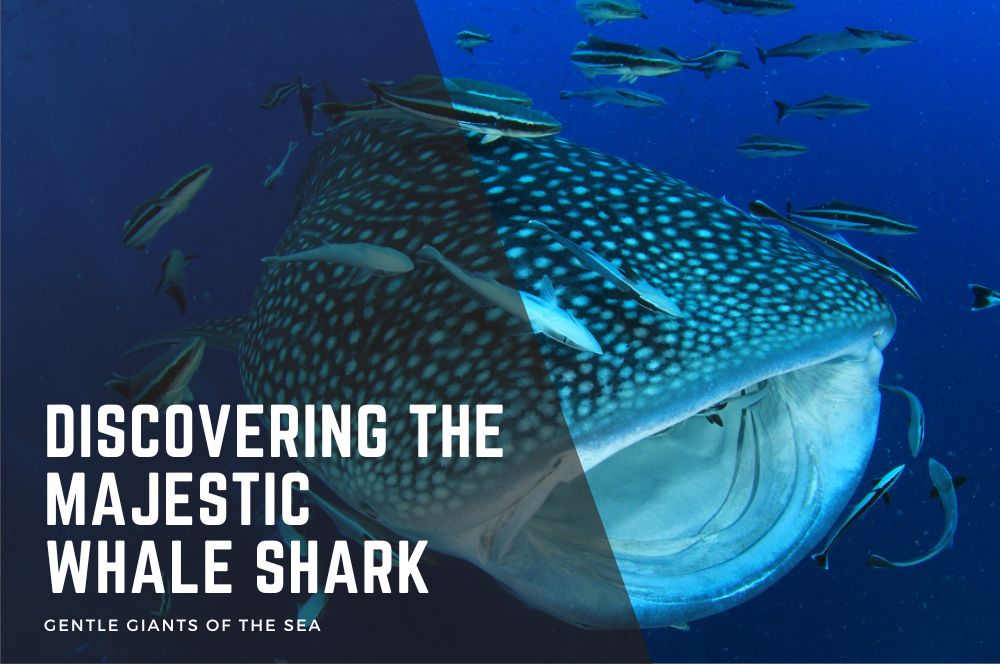
Gentle Giants of the Sea: Discovering the Majestic Whale Shark
The whale shark, often mistaken for a whale, truly stands out as the ocean’s largest fish. This article explores their majestic size, filters feeding in tropical waters, mysterious migrations, and surprising longevity. Uncover the vast world of whale sharks and why protecting them is not just about preserving a species, but maintaining the balance of our marine ecosystems.
Key Takeaways
-
Whale sharks (Rhincodon typus) are the world’s largest fish, not whales, known for their gentle nature and distinctive filter-feeding mechanism which does not involve the use of their teeth.
-
These migratory creatures favor warm waters and are distinguished by their sexual dimorphism and long-distance travel abilities, with some regions experiencing aggregations influenced by ocean productivity and temperature.
-
Despite their grandeur and ecological importance, whale sharks face significant threats from accidental capture, intentional fishing, and climate change, prompting conservation efforts and global regulations to ensure their survival.
Unveiling the World's Largest Fish: The Whale Shark
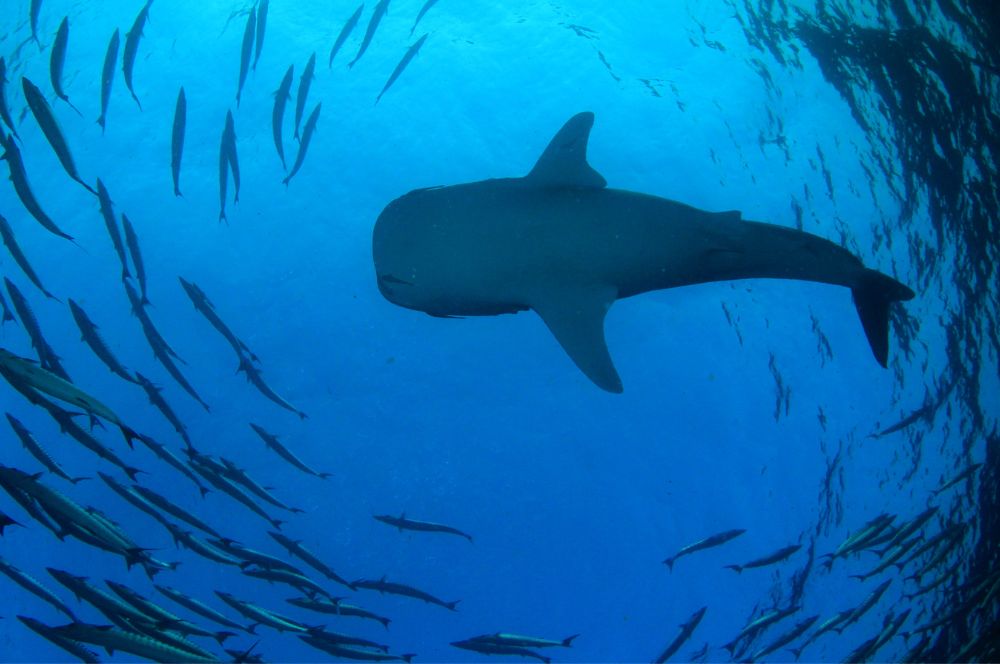
Despite their formidable name, whale sharks (Rhincodon typus) are not whales but the world’s largest fish. Their broad, flat heads and short snouts, coupled with mouths located near the tip, make for an imposing sight. These gentle giants, like most other whale sharks, have been navigating our oceans alongside other sharks since the Jurassic and Cretaceous periods, between 245 and 65 million years ago. The whale shark Rhincodon typus, as a species, has managed to survive and thrive throughout these eras, thanks in part to their unique whale shark’s teeth.
Marvels of Size and Scale
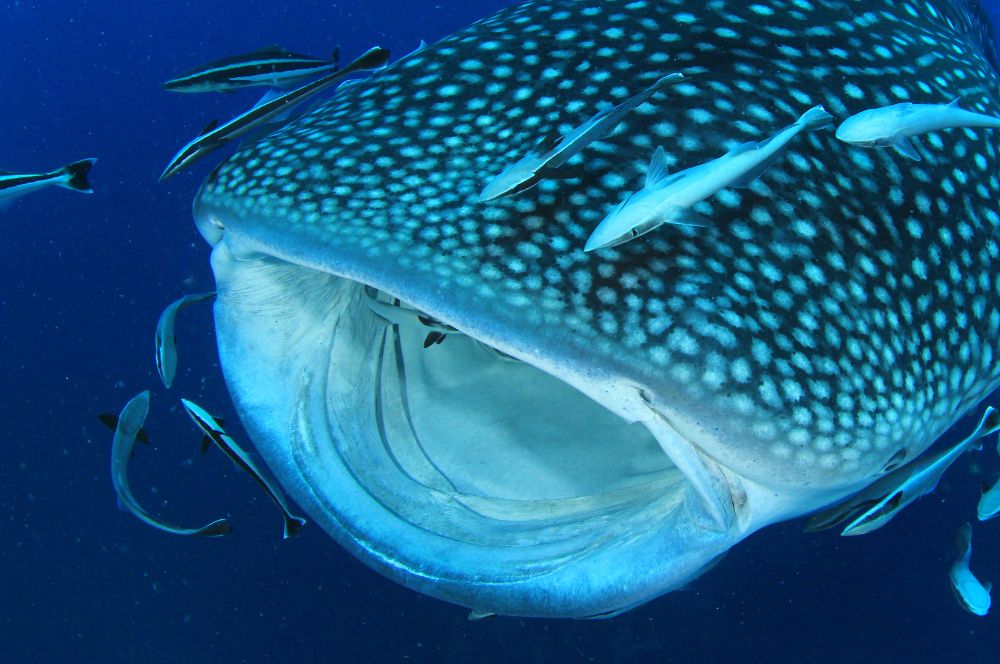
With lengths extending up to 12 meters and sometimes even 18 meters, whale sharks rank as some of the ocean’s largest inhabitants, presenting a truly awe-inspiring sight. Interestingly, female whale sharks exhibit sexual dimorphism, growing larger than their male counterparts, the male whale sharks.
Mature males typically measure between 8 to 9 meters.
The Unique Filter Feeding Mechanism
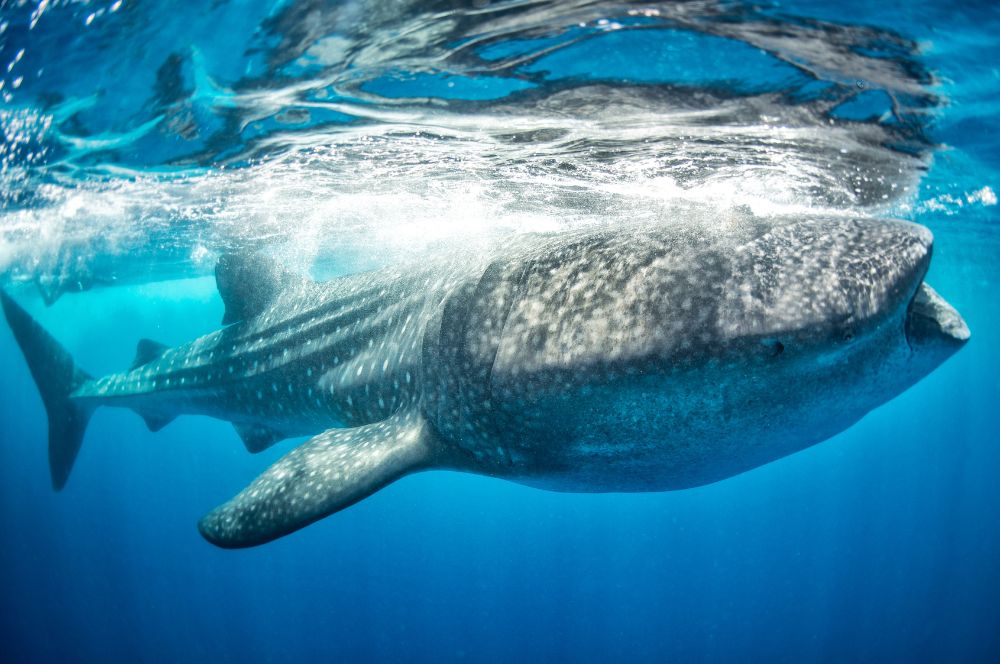
These docile fish predominantly feed by filter feeding, leisurely swimming with their large mouths agape, sifting plankton, krill, and small fish from the water as they move. The 20 filtering pads inside a whale shark’s mouth, alongside their pharynx, enable this process. Contrary to common misconceptions, the teeth of whale sharks play no role in feeding. The sharks primarily rely on their gill rakers for filter feeding.
Habitats and Migrations: A Global Journey
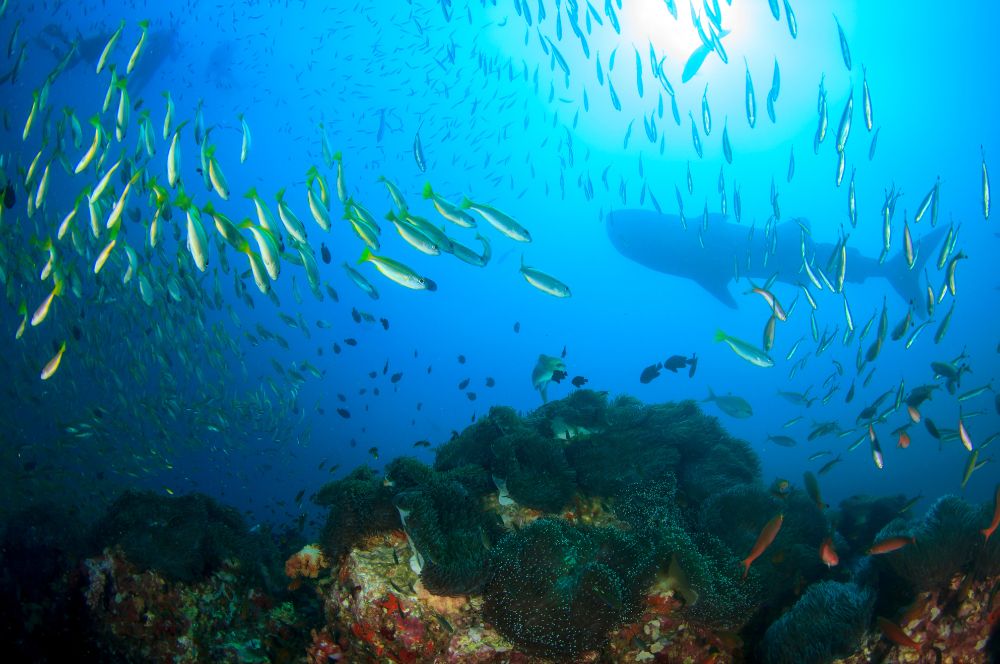
Typically found in tropical seas, blue sharks are often spotted in tropical oceans and warm temperate seas between latitudes 30°N and 35°S. The temperature preferences of these creatures influence their presence in specific areas, with surface sea-water temperatures ranging from 21 to 25°C dictating their habitats.
Migration patterns include travel northward from Ningaloo Marine Park and sightings in marine sanctuaries like the Flower Garden Banks and Florida Keys National Marine Sanctuaries.
Seasonal Shifts and Aggregations
Regions with conditions that foster high primary and secondary productivity, crucial for their feeding, often witness aggregations of whale sharks. These aggregations are observed more frequently in the mid-Equatorial Atlantic from February to June, due to reduced ocean current speeds and warmer sea temperatures, which enhance food supply.
Seasonal water temperatures around 27°C coincide with frequent whale shark sightings at Ningaloo Marine Park.
Long-Distance Voyagers
Beyond their grand size, whale sharks are also distinguished as long-distance travelers, capable of traversing thousands of kilometers over a span of several years. Some key facts about whale shark migrations include:
-
They can travel thousands of kilometers over several years
-
Satellite tracking technology has been instrumental in mapping their migrations
-
This technology has helped shed light on their complex behaviors and movement patterns
This information has significantly contributed to our understanding of whale shark behavior and migration.
Vital Shark Habitats and Conservation Efforts
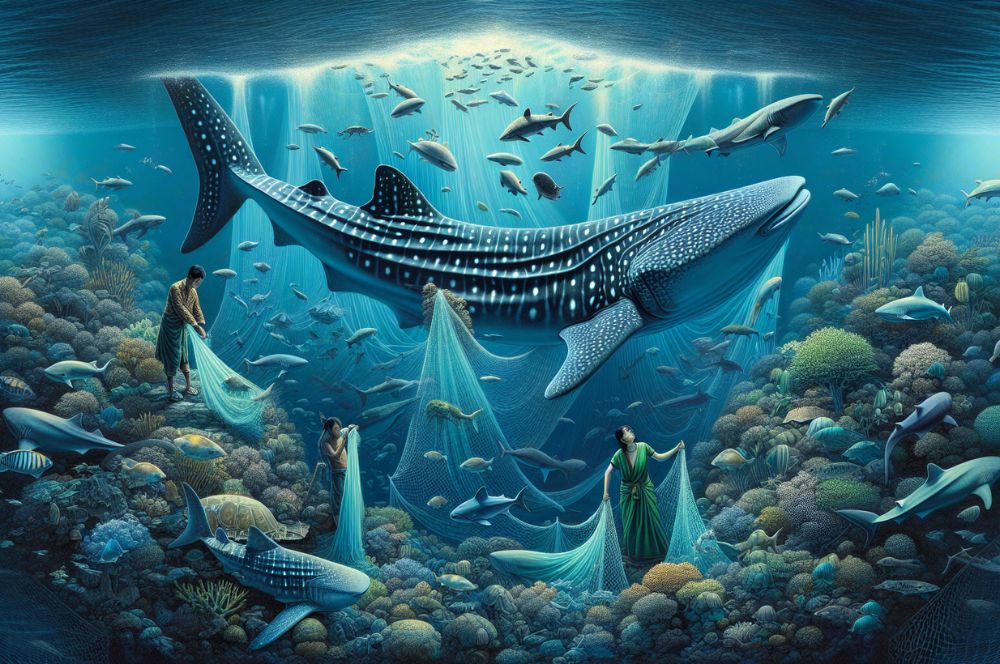
Despite their impressive size and long lifespan, numerous threats jeopardize the survival of whale sharks. These include:
-
Accidental captures in fishing gear
-
Deliberate catching for their fins
-
Impacts of climate change on their habitats and prey
-
Plastic pollution that can lead to entanglement and ingestion
The International Union for Conservation of Nature (IUCN) has categorized individual whale sharks as endangered, reflecting the pressing threats from hunting for meat, fins, oil, as well as accidental catches.
Sanctuaries and Laws Protecting Whale Sharks
The Philippines, India, and Taiwan have instituted bans on the fishing, sale, import, and export of whale sharks for commercial purposes. These measures aim to protect the species from exploitation and ensure their conservation. The whale shark was added to Appendix II of CITES in 2003 to regulate the international trade of live specimens and its parts.
Sanctuaries like the Flower Garden Banks National Marine Sanctuary have imposed specific regulations prohibiting activities such as:
-
killing
-
injuring
-
attracting
-
touching
-
disturbing whale sharks.
WWF and Other Organizations at Work
Organizations like the World Wildlife Fund (WWF) are working towards protecting vital shark habitats, reducing bycatch, and stopping illegal trade of shark products to preserve whale shark populations and their distribution. Whale sharks, being the largest fish in the ocean, play a crucial role in maintaining the balance of marine ecosystems.
For example, WWF aids in promoting sustainable tourism and livelihood opportunities on Mafia Island, Tanzania by collaborating with local communities, fishers, and the tourism sector.
The Biology Behind the Beauty: Understanding Whale Sharks
With lifespan estimates based on growth patterns reaching up to 150 years, whale sharks stand as some of the ocean’s longest-lived creatures. The elusive breeding habits of these creatures are highlighted by the rarity of encounters, with only one recorded instance of a pregnant whale shark, making the understanding of how whale sharks born survive a fascinating topic. In this context, studying younger whale sharks can provide valuable insights into their survival strategies.
Mysteries of Growth and Reproduction
Whale sharks reproduce via an ovoviviparous method, where females give birth to live pups that have developed within egg cases in the uterus. Interestingly, female whale sharks can retain sperm from one mating event and continuously produce a steady stream of pups over an extended period.
Patterns and Peculiarities
The distinctive patterning of white spots and stripes on their upper body, resembling a human fingerprint, is a unique characteristic of whale sharks. These distinctive checkerboard patterns help in recognizing individual sharks.
Despite their immense size, whale sharks are known for their gentle nature, posing no danger or aggression towards humans, thus aiding in research and interaction.
Interactions with Humans: Tourism and Threats
For whale sharks, human interactions can yield both positive and negative outcomes. Eco-tourism provides a cornerstone of income for many communities, especially during peak season around Mafia Island, Tanzania, where whale sharks are permanent residents. However, human activities also pose threats to these creatures, including entanglement in fishing nets, vessel strikes, and habitat loss due to human encroachment.
Whale Shark Tourism Hotspots
Whale shark tourism has become an increasingly popular attraction in various locations around the world, drawing numerous visitors to observe these gentle giants in their natural habitats. Key locations for tanzania whale shark tourism and other destinations include:
-
Mexico
-
The Galapagos Islands
-
Australia
-
The Maldives
-
The Bahamas
-
Thailand
-
The Philippines
-
Indonesia
-
Costa Rica
-
Egypt
-
Honduras
-
Belize
-
Tanzania
-
Mozambique
-
The Seychelles
-
Djibouti
-
South Africa
The Impact of Human Activities
Despite the absence of natural predators, whale sharks are susceptible to risks originating from human activities. These risks include becoming entangled in fishing nets, being hit by boats, and losing their habitat to human encroachment.
Exploitative activities, including the laborious work whale sharks endure, also endanger them; they are sometimes targeted for their fins, oil, and meat.
Summary
From their impressive sizes to the unique filter-feeding mechanism, from their extensive migrations to their elusive breeding habits, and from their interactions with humans to the threats they face, whale sharks are truly extraordinary creatures. The journey to understand these gentle giants is not only fascinating but also crucial in ensuring their survival.
Frequently Asked Questions
Why are whale sharks called sharks and not whales?
Whale sharks are called sharks and not whales because they are actually the world's largest fish.
How do whale sharks feed?
Whale sharks feed by swimming with their mouths open to filter plankton, krill, and small fish as they move. This allows them to efficiently consume their food while swimming.
How long can whale sharks live?
Whale sharks can live up to 150 years, making them one of the longest-lived ocean creatures.
What are the threats faced by whale sharks?
Whale sharks face threats such as accidental captures in fishing gear, deliberate catching for their fins, climate change impacts on their habitats and prey, and plastic pollution. These threats have a significant impact on their population.
Where can you see whale sharks?
You can see whale sharks in popular tourist locations around the world, such as Mexico, the Galapagos Islands, Australia, the Maldives, and many others. Enjoy your adventure!
Recent Posts





